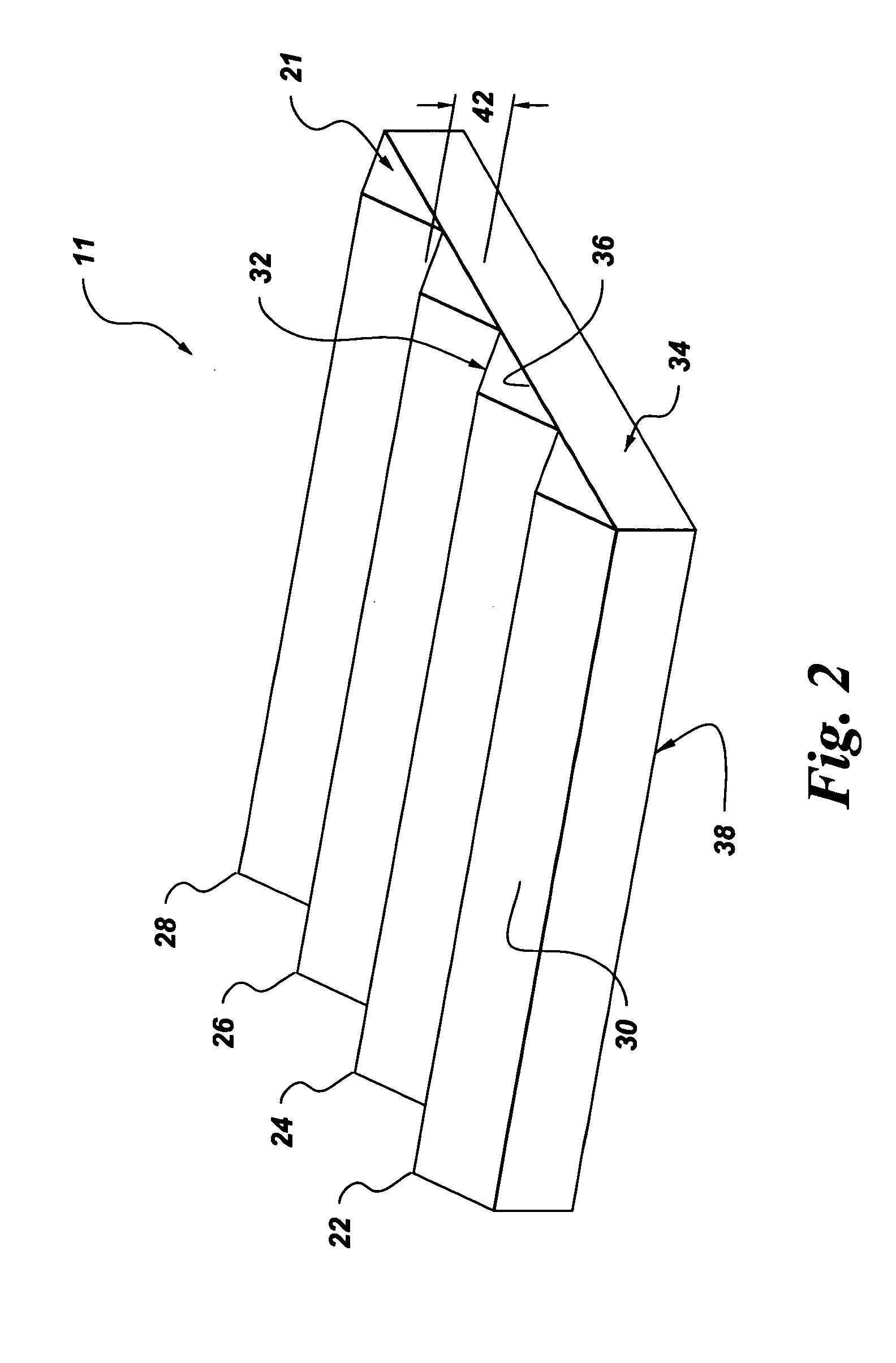Method of making a high refractive index optical management coating and the coating
a technology of optical management which is applied in the direction of polarising elements, lenses, magnifying glasses, etc., can solve the problems of difficult to obtain a useful lmf with refractive index, limited use of brominated acrylate derivatives, and low refractive index of most acrylate polymers, etc., to achieve high refractive index and high refractive index
- Summary
- Abstract
- Description
- Claims
- Application Information
AI Technical Summary
Benefits of technology
Problems solved by technology
Method used
Image
Examples
example 1
Synthesis of 2-(2-benzothiazolylthio)ethyl acrylate
Step 1. Preparation of 2-(2-benzotbiazolylthio)ethanol
2-Mercaptobenzothiazole (100 mmol, 16.7 g), ethylene carbonate (100 mmol, 8.8 g), potassium carbonate (0.7 mmol; 0.1 g) and 30 mL of toluene were placed in a 250 mL round bottomed flask equipped with a reflux condenser and a magnetic stir bar. The mixture was stirred and heated to reflux temperature for 1.5 hours whereupon thin layer chromatography (silica gel; 10% ethanol in chloroform eluent) indicated that the reaction was essentially complete. The solution was cooled to room temperature. Upon seeding with authentic product, an approximately 50% yield of essentially pure product could be obtained. However, the reaction mixture can be taken to the next step without purification.
Step 2
Preparation of the Acrylate Ester
2-(2-benzothiazolylthio)ethanol (100 mmol, 21.1 g), a total of 100 mL of toluene, potassium carbonate (250 mmol, 34.5 g), and tetrabutyl ammonium bromide (1...
example 2
The procedure of Example 1 was followed using 6-ethoxy-2-mercaptobenzothiazole as a starting material to produce 2-(2-(6-ethoxybenzothiazolyl)thio)ethyl acrylate as a colorless oil with refractive index of 1.61.
example 3
A mixture was prepared consisting of 1.06 g of 2-(2-benzothiazolylthio)ethyl acrylate prepared as described in Example 1, 0.40 g of RDX51027 brominated BPA diacrylate oligomer (product of UCB) and 0.04 g of Darocur 4265 photoinitiator which is a 50 / 50 mixture of 2,4,6-trimethylbenzoyl-diphenyl-phosphineoxide and 2-hydroxy-2-methyl-1-phenyl-propan-1-one (product of Ciba Specialty Chemicals). The solution was spin coated onto a silicon wafer using a speed of 750 rpm and a spin time of 20 seconds. The coated specimen was cured with a Fusion UV Systems process Model DRS-120 using 3 passes under the H bulb in a nitrogen atmosphere. The lamp to sample distance was 2.1 inches and the belt speed was 10 ft. / min.
The refractive index of the film was determined on a Metricon prism coupling instrument at 632.8 nm. The average of three determinations was 1.652.
PUM
| Property | Measurement | Unit |
|---|---|---|
| Percent by mass | aaaaa | aaaaa |
| Percent by mass | aaaaa | aaaaa |
| Percent by mass | aaaaa | aaaaa |
Abstract
Description
Claims
Application Information
 Login to View More
Login to View More - Generate Ideas
- Intellectual Property
- Life Sciences
- Materials
- Tech Scout
- Unparalleled Data Quality
- Higher Quality Content
- 60% Fewer Hallucinations
Browse by: Latest US Patents, China's latest patents, Technical Efficacy Thesaurus, Application Domain, Technology Topic, Popular Technical Reports.
© 2025 PatSnap. All rights reserved.Legal|Privacy policy|Modern Slavery Act Transparency Statement|Sitemap|About US| Contact US: help@patsnap.com



